
Last week the international news was awash with the horrible events that occurred in Tunis, at the Bardo Museum.
Our thoughts and prayers go out to the families who have been affected by this terrible crime, and to the people of Tunisia.
Having been to the Bardo Museum for my research, it is hard to imagine the sound of gunfire and screams in such a lovely house of the Muses.
I suspect that many would-be tourists will be scared away from the Bardo now, and that is truly a shame. I spent some hours there, immersed in the ancient world, listening to its many voices. It was a place of serenity, and of beauty.
So, rather than focussing on the violence that has so recently tainted this wonderful place, I thought I would focus on the beauty of the Bardo Museum.
This is a post I originally wrote in June 2013 entitled, Mosaic Masterpieces – Treasures of Roman North Africa. I hope you enjoy it…
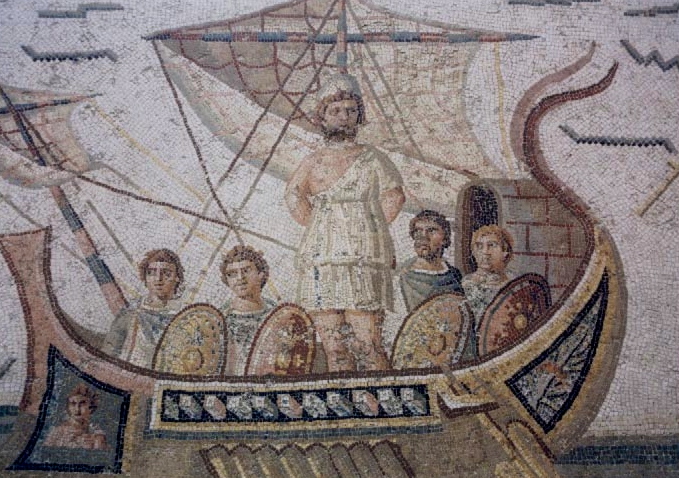
For a writer of historical fiction, and for an historian, the museum is the place to go for research.
Not only can you learn a lot about people and places, you can also come face to face with the possessions of the people and places about which you are writing. You can interact with the items that decorated and served long-ago worlds – Egypt, Babylon, Greece, Carthage and Rome etc. etc.
In a museum, culture is frozen in time as a sort of gift to future generations, a window to peer through and better understand those who went before us.
I’ve been to a lot of museums in my travels, large and small, great and not-so-great. But there was always something to be learned, something to take away with me that I could use in my writing.
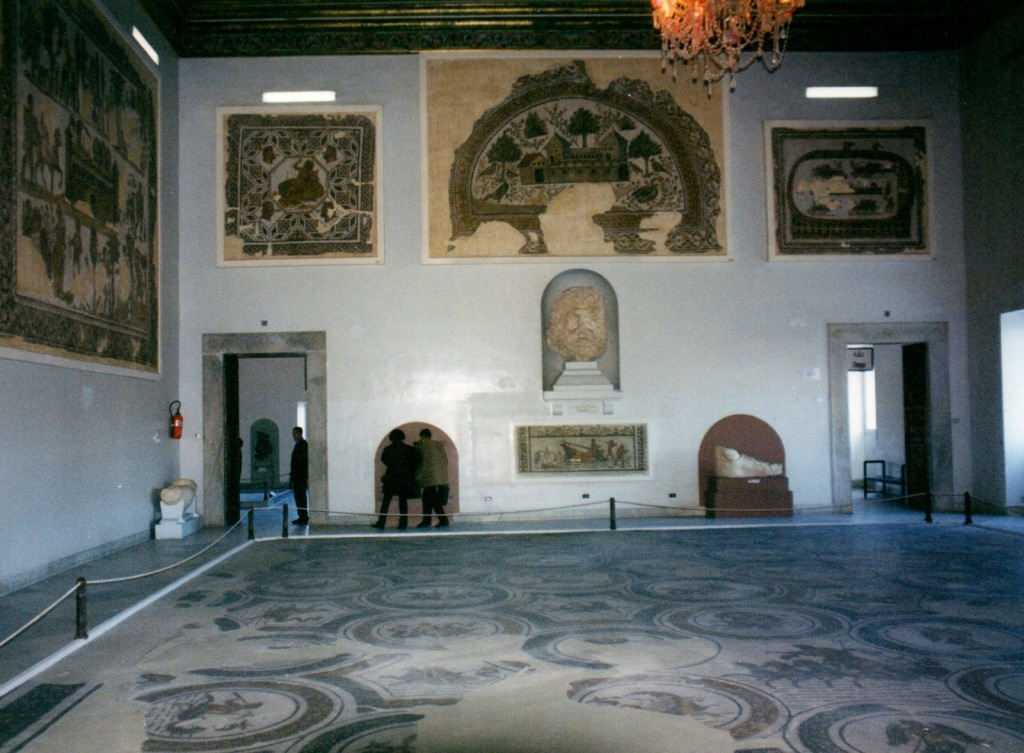
This post, I wanted to touch on a particularly wonderful museum that I visited in Tunisia – The Bardo Museum in Tunis.
When I went to Tunisia to do research for Children of Apollo and Killing the Hydra, visiting Punic and Roman sites on the fringes of the Sahara was one of the biggest thrills of my travels.
When our 4×4 left the desert behind, I was disappointed to be back in the city. Tunis held none of the allure of the southern desert or the fertile green hills of central Tunisia. There were no ruined temples or amphitheatres, no mosaics or ancient streets as open to the sky, unsuffocated by modernity.
We pulled up outside a rather unassuming building and were told this was the ‘famous’ Bardo Museum. I probably rolled my eyes, remembered swaying palms and Saharan sand beneath my feet. I dreaded the dark building before me after so much perceived freedom.
I was so wrong. When we entered the Bardo, my eyes fell upon some of the most magnificent artistic creations I have ever seen.
The walls and floors were absolutely covered with myriad mosaics of such colour, such intricacy – I thought the images would jump right out at me.
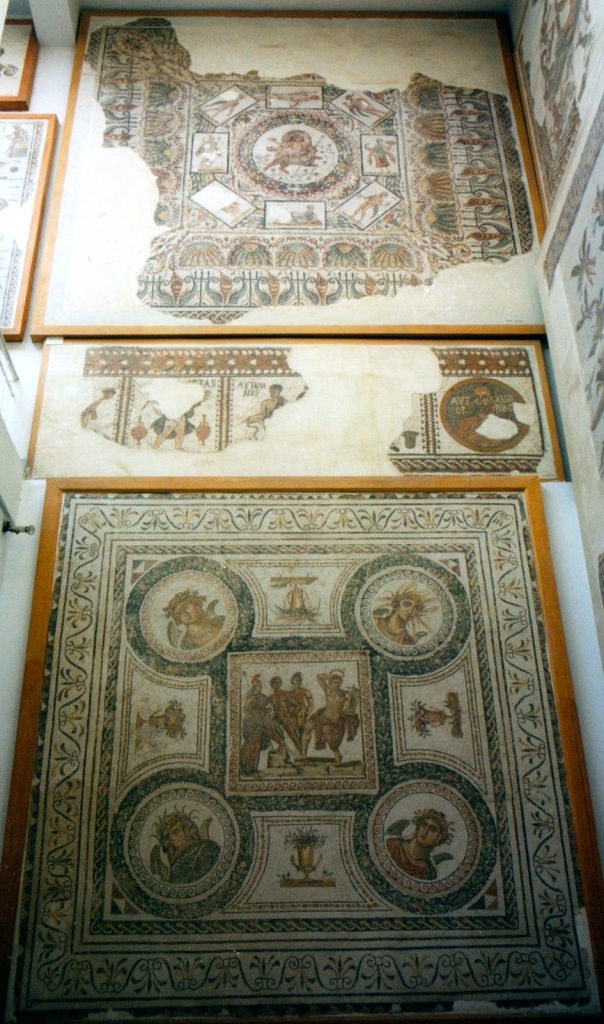
Floor to ceiling mosaics in the Bardo
And they were tucked away in this little museum that, up until that point, I had never heard mentioned by anyone at university or elsewhere.
I decided this week to look back over some of the photos I took at the museum and enjoyed revisiting those moments when I locked eyes with a tesseraed Triton or the striking statue of a Roman woman.
When I looked at the website for the Bardo Museum, I found that they have moved to a completely new, more spacious building.
The new museum is stunning, but for me the mosaics still take centre stage.
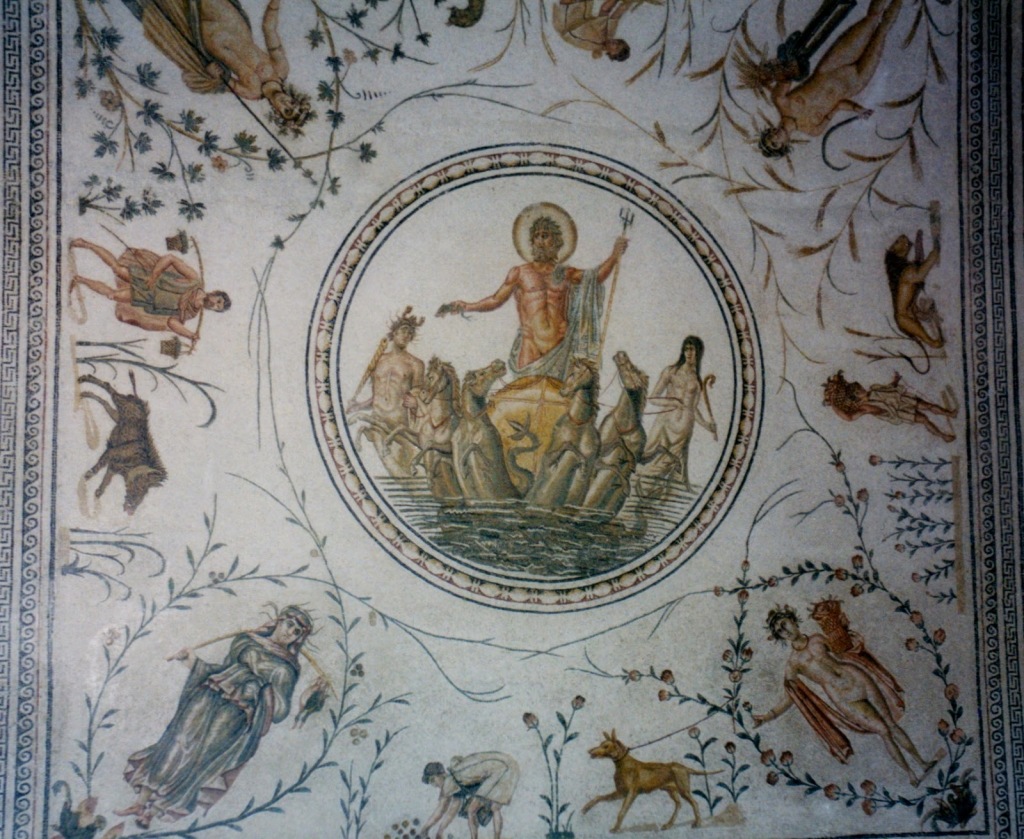
Triton mosaic
What is amazing about these creations is that they were what decorated the homes of the people who inhabited the period about which I am writing.
The visual that these mosaics provided for me and my written world was priceless.
Suddenly, my characters’ homes no longer contained shabby dirt or terra cotta floors, or even plain marble. Triclinii, peristylii and atrii came to life with the mythological and natural scenes that decorated Roman homes.
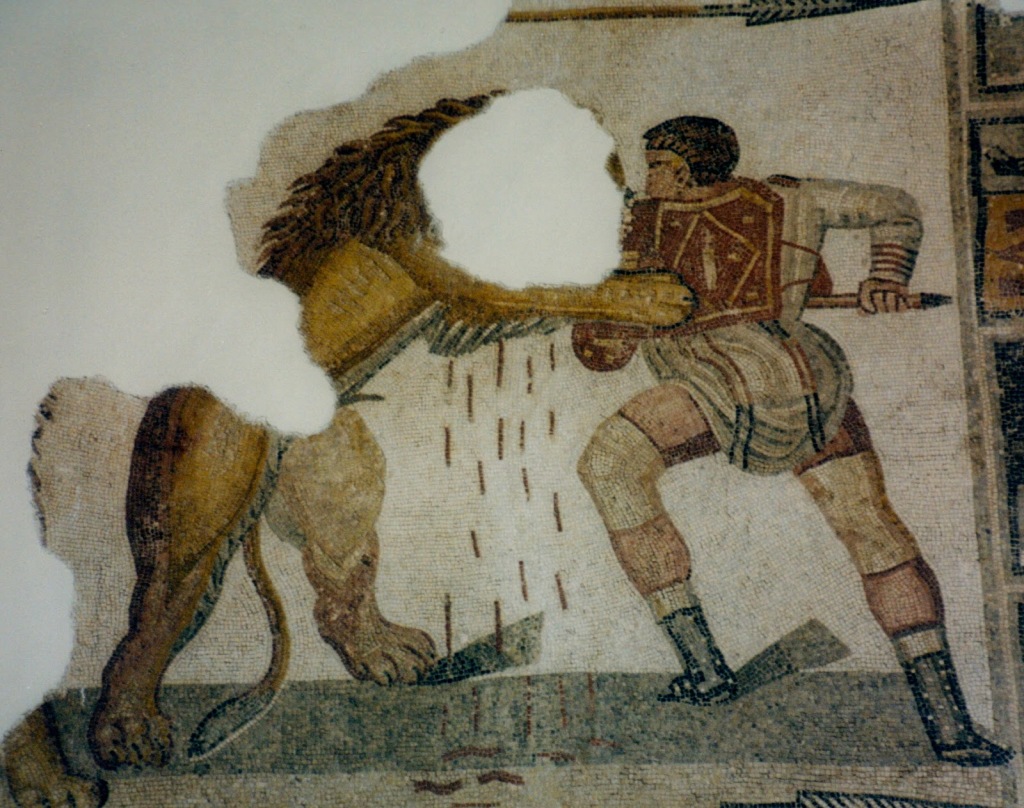
Gladiatorial scene
But these mosaics at the Bardo, and elsewhere, do not only depict the religious or fanciful aspects of belief.
More importantly to our knowledge, they depict the everyday activities of people ages ago. We see people hunting, fishing, tilling, and bringing in the harvest. We see images of the food they ate, the sports they watched and the heroes they worshiped.
These mosaics tell us so much about a world that would otherwise be lost to us. Thanks to these masterpieces, we know more about the buildings they decorated and the importance placed upon particular rooms within private homes, public and religious spaces.
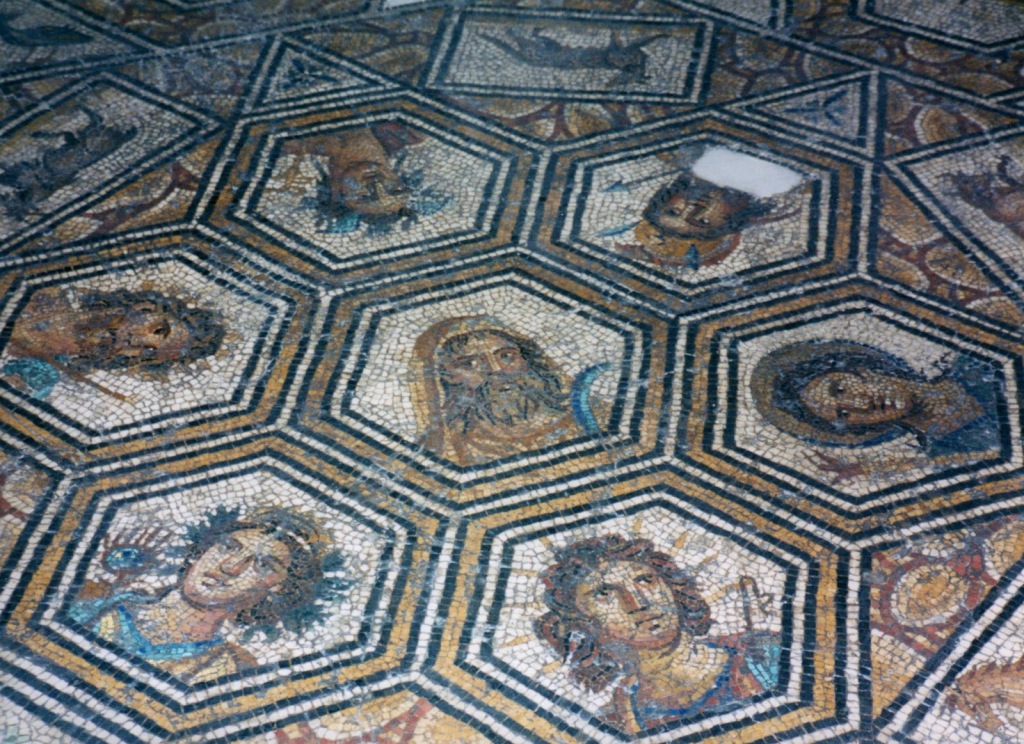
The Days of the Week
When I stepped out of the Bardo Museum into the setting sunlight on a Tunis street, I felt as though I had been a guest at sumptuous banquet in someone’s home, far off on the edge of the Empire. This was not some flee-infested frontier region. No.
The Roman provinces of Africa Proconsularis and Numidia yielded not only the oil, grain and garum upon which the Empire depended, but also artistic treasures that have left a mark on time.
At the Bardo Museum, you can walk among these treasured mosaics with many silent, sentinel statues as your fellow guests.
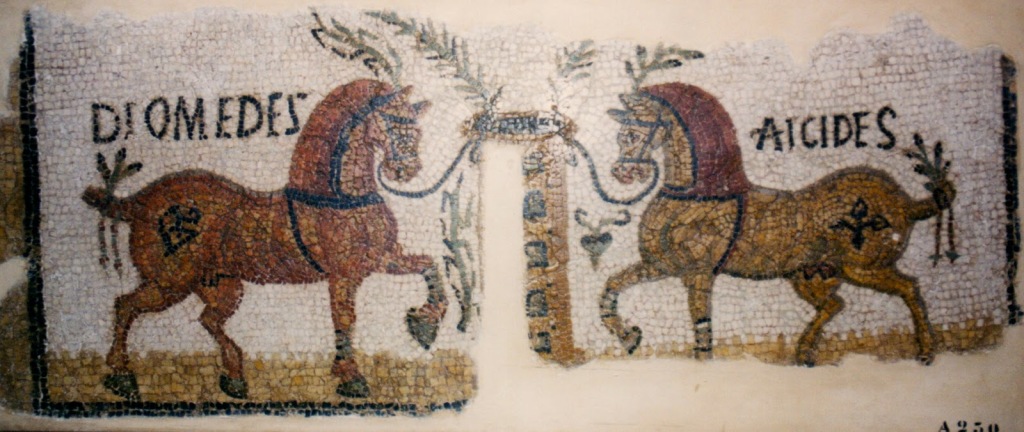
Champion Horses
If you ever get the chance to visit this place, do so. You’ll not regret it, and the memory of what you see will linger with you for years to come.
Thank you for reading.
What are your thoughts on the Bardo Museum? Given the chance, would you go? What do you think you could learn from the wealth of mosaics on display?
Tell us what you think in the comments below…

The poet, Virgil




They are incredible mosaics, the creativity and artistry was extraordinary. These photos remind me of my visit to the Roman Villa of Casale in Sicily. Each room had floor mosaics very reminiscent of those you have posted here.
I have the awful feeling the world is going to lose all the ancient sites and artefacts in the Middle East.
A great article Adam.
regards, Luciana
I’ve never been to Sicily. Would love to some day. Let’s hope we don’t continue to lose ancient sites. So sad. Glad you liked this article, Luciana!